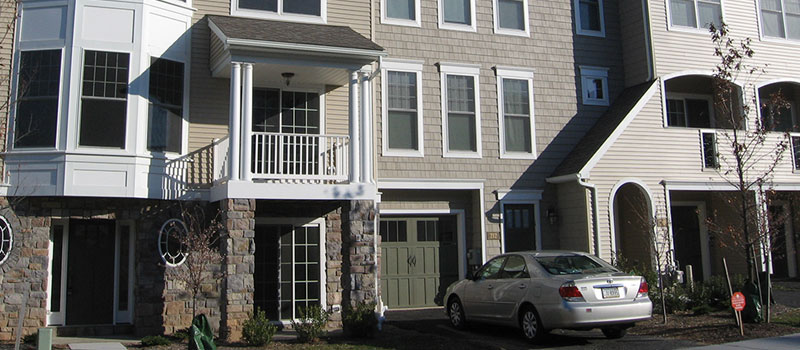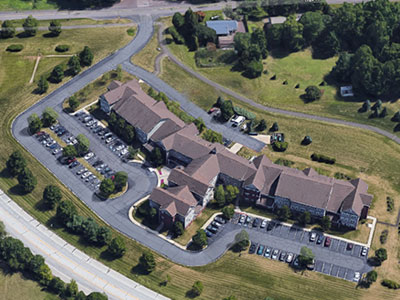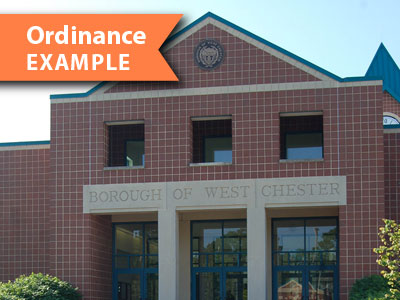Park View at Oak Crest
Lower Salford Township in Montgomery County provides a density bonus in exchange for affordable housing units in the R-4 District.
How it Works
Bonuses can encourage the development of affordable housing by allowing for an increase in the total number of dwelling units permitted on a tract of land. In exchange for an increased number of total units permitted to be constructed, the developer allots a specific number of affordably priced units as part of the overall development. Municipalities can support affordable housing bonuses through planning policies, zoning ordinance standards, subdivision and land development ordinance provisions, and public education, however the ordinances must include specifics to enact such a program.
Benefits
Affordability
With Chester County having the highest median home prices in the Commonwealth, increasing the number of affordably-priced homes is essential.
Increased Development Opportunities
Bonuses through the market-driven development process may provide enough incentive for a for-profit developer to construct affordably-priced housing.
Population Support
The varied situations of residents require affordably-priced housing to address the needs of the entire population of the county.
Ardmore Crossing
Lower Merion Township in Montgomery County permits an increase in building and impervious coverage when at least 10% of the units are affordable.
Get Started
A municipality should first develop a definition of what qualifies as affordably-priced housing. A general affordably-priced housing definition is housing that does not cost more than 30 percent of the household income. For ordinance purposes, greater specifics are necessary, such as tying the income level of household occupants to a percentage of the Area Median Income. In southeastern Pennsylvania, given relatively high incomes combined with high housing costs, it may be appropriate to allow the percentage to range up to 120 percent of Area Median Income, particularly to address workforce or middle-income housing. Rental and ownership situations should both be addressed, with independent determinations on an appropriate income level. Determination of income level to be addressed should also reflect local needs and regional housing availability and demand.
Once a determination has been made as to what qualifies as affordable housing for ordinance purposes, the municipality should next determine where and what type(s) of bonus or offset they will offer to incentivize affordable housing development. Bonuses should be available in areas with access to public water, public sewer, multimodal transportation options, and other public infrastructure. All such bonuses should be considered with respect to minimum or maximum thresholds, or not to exceed limits. The calculations for ratios and/or percentages of market rate to affordable units should be established in the zoning ordinance, and should be precise and easily followed. The different types of bonuses and offsets are often related to density, but can reflect other considerations. Types of bonuses can include:
Density Bonus
A density bonus allows for a developer to exceed the maximum permitted density within a district to allow for the construction of enough market-rate units to offset the costs of providing affordable units. As an example, for every one affordable unit included, an additional three market-rate units are allowed beyond what is permitted in the underlying district.
Height Bonus
A bonus can also be provided with respect to building height – in exchange for a minimum percentage of affordable units that exceeds the standard density, a taller building height is permitted. As an example, if 20 percent of units are affordable, the maximum height may go from 35 feet to 48 feet.
Use Bonus
Consideration should be given to allowing for the development of housing (i.e. duplexes, twins, townhouses, apartments) within districts that may not be otherwise permitted, only if affordable units are part of the development. This can be an effective bonus as it allows housing types to be built that would not be allowed normally, such as allowing apartments in an office park.
Flexible Bulk and Lot Requirements
Other incentives or offsets can be provided in conjunction with or in place of a density and/or height bonus. These may include reduced lot size, reduced setbacks, or higher impervious coverage allowances when affordable units are part of a development proposal.
Administrative reductions/waivers
Although these do not provide as much of a financial incentive as density bonuses, a municipality could investigate reductions or elimination of fees associated with the administration of approving an affordably priced housing community. Consideration could also be given to a reduction in development review time for an affordably priced housing proposal.
Whatever bonus approach is chosen, it must be designed to work financially for developers; otherwise, they will not bother to use the bonus. Municipalities will need to understand the benefits and costs to a developer of the bonus, which can probably be estimated most effectively by working with local developers and builders when the ordinance is being written.
Considerations
Retention of New Affordable Housing Stock
Consideration should be given to ensure these units remain affordable. Retention of affordable housing units could be ensured by the municipality through measures such as deed restrictions or conditions of approval, and potentially enabled through certain design and construction decisions by the developer. The municipality may need to develop a tracking system to ensure these homes and rental units remain affordably priced.
Neighborhood Compatibility
Since increased densities may result in development different from that of the existing neighborhood, design standards such as landscaping, buffering, public space, or public art should be developed to best integrate the new development into the existing built environment. Compatibility with historic buildings and neighborhood character should be taken into consideration where affordable housing bonuses are proposed. From a visual standpoint, affordable units should be indistinguishable from the market rate units in a development.
Neighborhood Opposition
Increases in residential density and lack of familiarity with affordable housing may cause pushback from adjacent residents. Municipalities should consider appropriate regulations based on availability of services, lot sizes, and related issues, working with community members to determine how to best provide for a range of housing options for residents. Consideration should be given to the development of fact sheets with local examples of affordable housing to educate the public on the issue.
Examples
West Chester Borough has a Unified Mixed-Use Development option (§112-35.D of the Zoning Ordinance) in areas of the Commercial Service District along major thoroughfares that includes flexible lot and bulk regulations, reduced parking requirements, and incorporation of community facilities and neighborhood amenities in exchange for 50% of the units in the proposed development being affordable.
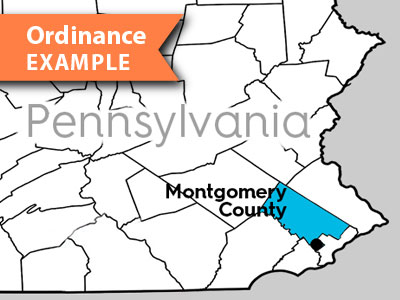
Lower Merion Township has a density bonus (§155-87.24.A of the zoning ordinance) in the Mixed Use Special Transportation District that allows increases in building coverage and impervious coverage in exchange for 10% of the units being affordable.

Lower Salford Township has a density bonus (§164-49.B of the zoning ordinance) in its R-4 Medium-High Density Mixed Dwelling District that permits an additional 0.5 dwelling units per acre when 15% to 25% of the units are affordable.
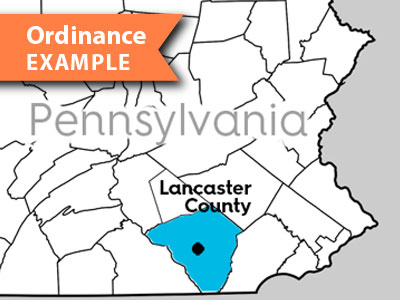
West Lampeter Township has a density bonus for workforce housing within their Neighborhood Design Option (NDO) of their zoning ordinance. Specifically §285-34.S.6 allows for when a minimum of 10% of the total dwelling units are reserved for workforce housing that two additional dwelling units for each workforce unit may be constructed up to the maximum allowable density of the NDO.
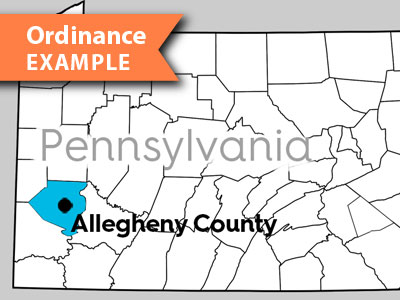
The City of Pittsburgh has an Inclusionary Housing Overlay District (§907.02.K of the zoning ordinance) in place for the Lower, Central, and Upper Lawrenceville neighborhoods. These provisions require mandatory construction of affordable units based on the overall project scope either as part of the overall project or located at an off-site location within the neighborhood.
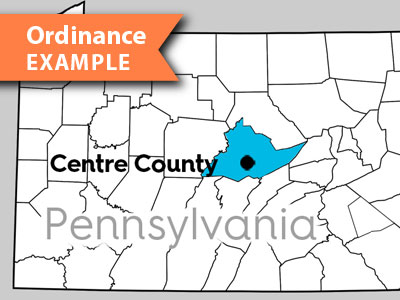
The Borough of State College has provision within their zoning ordinance that mandates Inclusionary Housing to all residential land developments in all zoning districts. When actual units cannot be provided, they offer a variety of alternatives that include: fee-in-lieu, off-site development of units, and donation of land or structures for inclusionary units.


